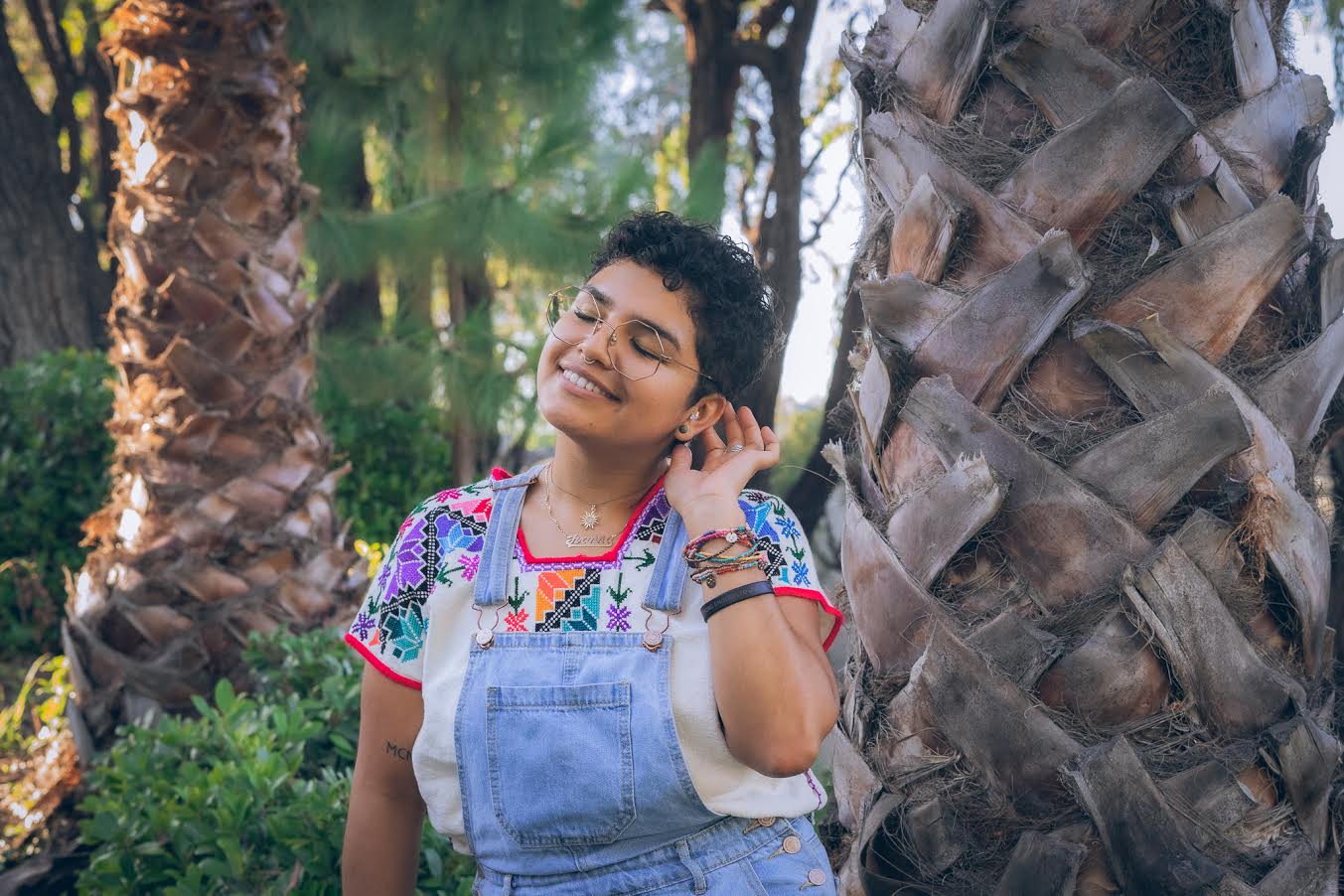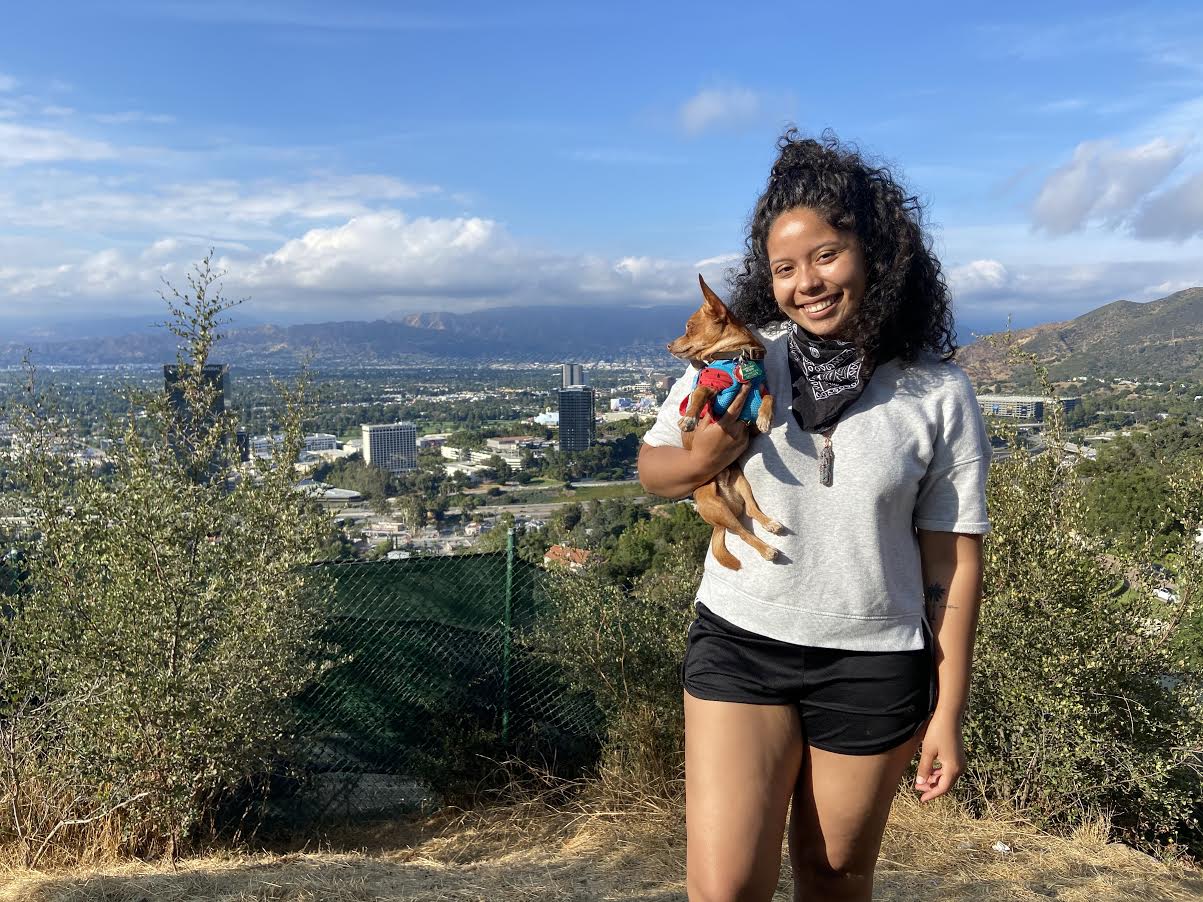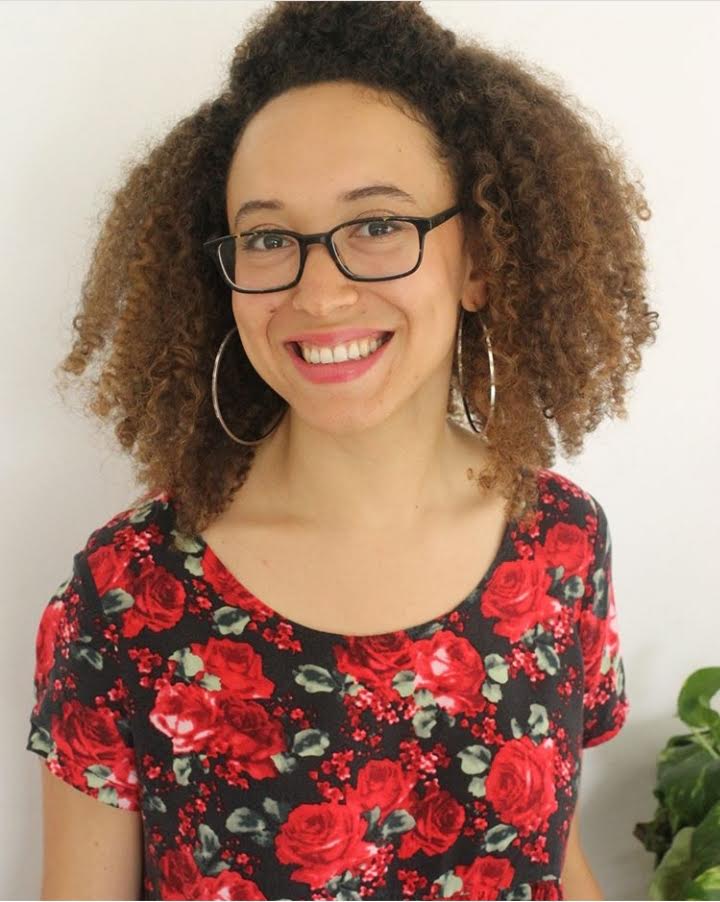The Veggie Mijas Understand the Food Movement es Social
This piece first appeared on the website Stone Pier Press, an environmental publishing company with a food focus. The author is Julissa Nunez, a News Fellow there.
In my family, no one reaches for the salad first. The Hernandez household treats vegetables the way college students treat the Boston fern parked on a dresser in their dorm room. It’s there, sure, but mostly for the visual appeal.
I live in Spanish Harlem with a single mom who moved here from the Caribbean. Until very recently, I felt like I stood on the sidelines of the plant-based movement. Had you asked me if I’d like to eat more vegetables and grains, the answer would’ve been, yes! Provided there’s a piece of chicken on the side.
Meat has held such longstanding cultural weight in our family that abandoning it altogether felt like giving up part of my identity. It doesn’t help that my family and many friends scoff at the term veganism. It’s partly because we just didn’t grow up that way. In my circle, veganism applied to other people, or so it seemed.
Let me ask you: When you consider mainstream veganism, whose face did you see?
Is it Gail, who lives near a Whole Foods and for whom eating a plant-based diet only requires enough willpower? Or is it Joselina Tejeda, who lives in the South Bronx?
“If I go to the three supermarkets nearest to me, if I go in their vegetable aisle, I cannot find fresh vegetables,” Josie, who is my older sister, tells me. “They’re overpriced and they’re on the border of rotten.”
Lately, I’ve been considering whether or not to eat less meat. I know that starting a plant-based journey can begin with a change of mind—the decision, for instance, to load up your grocery cart with fresh greens instead of hamburger meat. I’ve also discovered that for many of us, it’s more complicated than that. The inability to see yourself represented in the plant-based movement can mean being left out of it.

This reality is what prompted Ivanna Garcia to join Veggie Mijas, a collective of womxn, femmes, and queer vegans of color that has pledged to expand plant-based eating in their communities.
“When I first became vegan, I was intentionally looking for Black vegan influencers, or brown queers,” she says, “cause I want to learn from other perspectives.”
What Ivanna is asking is this: What does plant-based living look like for real people, who may be struggling to make ends meet, who live in food deserts like Josie and me?
Where are we in the movement? And how can a community bring plant-based eating to neighbors who think it’s for other people?
The women who run Veggie Mijas recognize that when it comes to transitioning to plant-based living, we’re not all starting on the same playing field. They help neighbors, like me, imagine a different way of eating all while supplying us with support, and good company.
So here’s what we, mi gente, are facing
My own food story begins with my mother, Lourdes, a single parent of two residing in El Barrio, of New York City, a neighborhood of largely Latinx immigrants and Black folks. She emigrated here almost three decades years ago from the Dominican Republic, where she grew up on a farm in rural Canete. Her family harvested beans, plantains, yucca, sweet potato, eggplant, chayote, orange, grapefruit, pimiento, cilantro, mango, pineapple, bananas, guanábana, mandarins, repollo, and avocado.
Everyone raised poultry in their backyards and my mother would kill hens herself while the men handled the larger animals. Meat was typically consumed once a week, she tells me. As we’re talking, she laughs, as it occurs to her that back then her diet was as close to vegan as it has ever been.
For her, eating was simple. You ate what you grew, when it was available. The same day you harvested your food, you cooked and prepared it. There was no need to worry about additives or pesticides. Food was organic and whole. It wasn’t until she arrived in the United States that her relationship with food changed.
In the States, my mother learned to eat meat more regularly because there’s more of it, and it’s pretty cheap. This, I learned in a charla with the co-founder of Veggie Mijas, Mariah Bermeo, is part of the problem. Bermeo told me that meat is marketed aggressively in many low-income urban neighborhoods. I couldn’t find any studies to support this, though The Institute of Medicine released a report in 2005, and concluded: “Residentially and economically segmented food marketing is facilitating less-healthy diets among residents of low-income neighborhoods.”
“What I love about Veggie Mijas is that it tries as best it can to remove that pressure of white people in your area, because it’s different when they’re around.”
But I did notice how much less expensive meat is than vegetables when I did my own local price check. In my area of Spanish Harlem, you can buy seven pounds of off-brand “farm fresh” chicken legs that come in a plastic baggy for a total of $4.39. You can buy a pound of ground pork for $2.29 and two pounds of chicken breast for $3.68. Cheap.
Fresh vegetables, on the other hand, are much pricier. Just one pound of tomatoes will cost you $6.00, as will a single butternut squash. Two mangoes will cost you $5.00, one whole watermelon will rob you of $10.00, organic bell peppers come at $5.00 per pound and that same value of five will get you one leek. It should also be noted that in my local store you can find a section of non-refrigerated, rotting produce feasted on by a pack of flies.
In a grocery store about a twelve-minute walk away in a more gentrified part El Barrio, you can take home an entire pork shoulder for a hefty $17.41. For that same, slightly smaller cut of pork in my local store, you’re only breaking $5.28. At the same upscale market, one bag of broccoli will cost you seven dollars and a package of spinach $8.39. So if you were to take home two vegetables, you’re already spending, tax included, about twenty dollars. On spinach. And uncooked broccoli.
In other words, meat is a steal where I live. Produce, not so much. But people in more expensive neighborhoods often pay a premium for vegetables, too.
Another disincentive to eating veggies is a food distribution system that can favor wealthier populations. New York grows and raises a lot of food, but in 2010, The New York Times reported that lot of it bypasses the Bronx to the Hunts Point market, a major distribution point, and little is actually sold in surrounding neighborhoods.
Gentrification is only making things harder for many of us. My East Harlem neighborhood is now heavily gentrified. While pockets are still considered food deserts, food prices have soared in recent years to meet the needs of its new residents. Those of us who have lived here for many years are further disenfranchised not only by the increased financial burden of soaring housing costs, but by the cost of food and the emergence of supermarkets designed to meet a certain aesthetic for those moving in, largely white folks.

The Food Movement es Social.
Veggie Mijas was born out of a conversation between Mariah Bermeo and Amy Quichiz who shared an apartment in the summer of 2017 while attending Syracuse University. Unhappy with their college diet, missing the food they grew up with, they turned to their community for help. Within a year, Amy had decided to turn the conversation into a collective so that other womxn of color could find each other, share recipes, and build a community stronghold.
She called it Veggie Mijas and, along with Mariah, resolved to educate lower income communities of color on the dangers of an animal-heavy diet. The group, which has chapters in several cities, hosts veggie potlucks, rounds up fresh produce for giveaways, and organizes panel discussions on nutrition and veganism. Members hold cooking lessons on how to veganize tacos, pupusas, empanadas, and all the foods they grew up with. Most recently, members in Oakland and DC have been making vegan burritos and handing them out to protestors and Black Lives Matter activists.
This community-driven approach addresses my mother’s fear that by adopting a vegan diet, she’ll lose her connection to the tastes and flavors she grew up with, an integral part of her Dominican identity. The fear of having to sacrifice culture to eat healthier is a big part of what Veggie Mijas is trying to counteract.
“We were still sharing in our culture in a way that was beautiful, and didn’t feel like it was white-washed,” says Josie, who joined in 2018, and now runs the New York City chapter.
I’ve recently joined my sister. This officially marks my second week since transitioning to becoming a vegetarian. It was through listening to the guidance and lived experiences of the Mijxs that finally persuaded me take the leap.
I care about the earth and its creatures, and being plant-based is one relatively simple way to do what I can to help. It’s also one of the most radical things you can do. With each passing day, I feel more proud of the progress I make in taking on this new identity of a plant-based eater.
As Mariah told me, “Just because this is catered to a white crowd, doesn’t mean you can’t partake in it. Bring your own culture, bring your own style of being, bring yourself to this space.”

Take your time.
“It took me many years to become fully vegan. I didn’t set out to do that. It was just one step at a time. Well, this feels right, this feels right. I would cut out one thing, see how that felt, then eliminate something else. It took me quite a while.
Even if you do give in to temptation, it’s important to understand this is not something you need to be perfect at. This is just a lifestyle habit. If you are 99 percent plant-based vegan, and maybe once a year your mom makes that amazing pernil, the braised pork leg you can’t resist, and you ate some of it, that’s not something to beat yourself up about. Just know that you are on a journey and you are striving to be better.
Veganism is about love and compassion. It’s about taking care of our earth, our animals, and our planet. It’s also about taking care of ourselves.” – Josie
Have intentional conversations with your family.
“So with my mom, I told her, you already eat mostly vegetarian. I’m like, plantains, you eat plantains all the time, sis. You eat rice all the time. You eat ensalada and cebolla all the time. You already know how to cook really well. So instead of adding the meat to your caldito, or broth, just add more vegetables.
And like to her, she’s just like, Pues eso no es caldo —well that’s not broth! And I’m like, ‘Yes, you’re right. It’s not meat-based broth, but this soup is going to be better for you than that meat.’
And then I ask her: ‘Where do you think this comes from? El vaca. Okay, that’s simple. Where does this cow live? What is this cow given?’ Really begin to question your family. Find out what they know about the very food that they’re eating.” – Mariah
It’s never too late.
I know so many folks who are much older who got to have another 30, 40, more years of life simply because they decided to change their minds about how to eat in their thirties and forties. It’s very much possible. – Mariah
Have a good relationship with your body.
“How we see our bodies is really important. Just having that space to be like, I love my body for what it is. It protects me, it keeps me safe. There’s a pandemic going on, it’s protecting me.
Why am I going to be upset at my body for gaining weight? It’s literally in survival mode right now. Instead of saying oh this or oh that, say I love my body for the way she is, because she’s beautiful, she’s sacred, and she’s valid. My body’s going to change cause that’s life. That’s beautiful. That just means like more wisdom.” – Ivanna
Find your why.
“Finding out your motivation for plant-based living because that is what kept me going when everyone was ridiculing me. I know that I feel better when I’m participating in this way. I know that I don’t want to give into peer pressure. But it is hard.
Finding community, finding people you can talk to who understand you, is really important. Even if we’re in a loving space, we all don’t always understand each other. Learning your why is really important. Educate yourself and just take small steps.” – Ivanna
Top photo by Photographee.eu/ Adobe Stock.
More Reading
Six unusual greens to try
September 4, 2024
In Brea Baker’s “Rooted,” the history of Black land loss is personal
July 17, 2024
Limits for PFAS in drinking water signal a new phase in federal action on 'forever chemicals'
May 1, 2024
Create Less Waste and More Color in Your Kitchen with Natural Dyes
April 27, 2023
Post-UN Water Conference, When You Think About Your Next Meal, Think About Water
April 18, 2023
Community Supported Fisheries Prove Seafood Can Be Local, Too
February 27, 2023
Is it Possible to Decolonize the Wine Industry?
October 24, 2022
Dairy, Drought and the Drying of the American West
October 21, 2022
Can the California Plastics Law Solve Our Plastic Problem?
September 15, 2022
What’s for Dinner? Protein — and its Large Water Footprint
June 2, 2022
